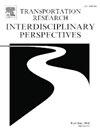No more flying blind: Leveraging weather forecasting for clear-cut risk-based decisions
IF 3.9
Q2 TRANSPORTATION
Transportation Research Interdisciplinary Perspectives
Pub Date : 2025-02-05
DOI:10.1016/j.trip.2025.101349
引用次数: 0
Abstract
Unmanned aircraft systems (UASs) have experienced a notable surge in applications, particularly with the increasing deployment of vertical take-off and landing (VTOL) vehicles in urban environments, which are more flexible in comparison to traditional aircraft. Nevertheless, the advantages of using VTOLs come with an increase in operational risks, too. Although there are approaches to support the fulfillment of safety objectives for VTOL operations, none of them specifically consider the type of weather information needed to guide decision-making successfully. Having detailed weather forecasts within operational areas can help avoid unwanted outcomes while assuring safe operations and mission success. On this basis, this paper proposes an innovative methodology to support decision-making in VTOLs missions, emphasizing the importance of weather forecasting practices. The decision support methodology presented in this study involves four phases, which consider different timespans (i.e., from more than two weeks before up to two hours before the mission), eventually assessing dedicated feasibility indexes. A case study is proposed to show how the methodology could be implemented into a decision support system with the objective of guiding VTOL decision makers in identifying the most suitable vehicle to ensure successful operations in various contexts from innovative air mobility solutions towards industrial inspection practices.
求助全文
约1分钟内获得全文
求助全文
来源期刊

Transportation Research Interdisciplinary Perspectives
Engineering-Automotive Engineering
CiteScore
12.90
自引率
0.00%
发文量
185
审稿时长
22 weeks
 求助内容:
求助内容: 应助结果提醒方式:
应助结果提醒方式:


